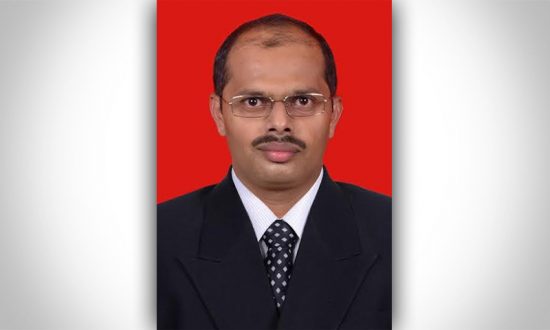Shivanand Pandit is an autonomous Finance and Tax Adviser, a writer by zeal and a reader by passion. He has 24 years of experience in the field of Finance, Taxation, Cost management, Audit, Business management and Corporate laws. He has authored the book BEGIN TO WIN (a comprehensive guide for personality development) which has secured the First rank twice in a National level sales contest and topped the Notion Press publication’s Top-selling books. Pandit runs two institutes, namely Apex Financial Advisory Services and Winners Coaching Point in the State of Goa.
Indian education sector gets a new shade. The new National Education Policy receives the green signal from the government of India. The Union Cabinet has also favoured a proposition to retitle the Ministry of Human Resource Development as the Ministry of Education. While the policy stipulates plentiful transformations and structural modifications in the education segment, these restructurings have kindled countrywide discussions and debates.
A National Education Policy is a comprehensive scaffold to steer the progress of education in the country. It refers to the guidelines and ideologies that regulate the operating system of education. To formulate power-packed educational policies, many imperative aspects have to be taken into contemplation. These are mainly pedagogical methodologies, resource mobilization, curriculum content and the possible impact of the policy on different groups.
Education is a tool which places an ill-bred person on the track of an intellectual, progressive, moral and virtuous course of life. Education is the power that directs a person to the veracious direction. Fortunately, major prominence has been given by the governments throughout the world on education. There is a universal weight on increasing care on the aftermaths of educational policies and their influence on social and fiscal progress.
In India, progressively, people have started to understand and appreciate the importance of education, and this has elevated the country’s literacy rate in the past years. The Indian education system is famous in the world for its extensive and best academic knowledge. It has gained more recognition ever since the government of India permitted 100% Foreign Direct Investment on the education sector in 2002. However, in India, there is a wide gap between policy proposals and enactment due to social and political compressions and administrative lapses. Policies have also often been prejudiced by contemporary political agendas, and as a result, many lacunae in our educational system have still endured.
Flashback
Even though education policy has played an infinitely imperative role in the development of education since pre-independence days, a brand new chapter in educational policy began with India becoming independent. Since 1947, the Indian government has introduced a variety of measures to quicken the growth of education in both rural and urban India. After India adopted the Constitution, education became the accountability of both state and central governments.
Considering commendations of the Kothari Commission, Prime Minister Indira Gandhi announced the first National Policy on Education in 1968. The policy upheld the need for a radical restructuring of the education sector for the superior cultural and economic progress. The government, led by Rajiv Gandhi, introduced a new National Policy on Education in 1986. The policy highlighted the equalizing of educational opportunity for all the citizens of India by eliminating inequalities present in the education segment. In 1992, the government of P.V.Narasimha Rao modified this policy. In 2005 the government of Manmohan Singh adopted a new policy centred on the ‘Common Minimum Programme’ of United Progressive Alliance.
New song – New tone
Thirty-four-year-old National Education Policy has been replaced by the Modi government in the year 2020. The new policy has stipulated plentiful amendments and reforms in the education world. Two committees, namely the TSR Subramanian Committee and the K Kasturirangan Committee, have informed the final draft after taking nearly five years. Let us make a sincere effort to know about the important recommendations of the new policy.
- As per the National Education Policy 2020, education will be mandatory for children between the age of 3 and 18 years. Keeping intellectual developmental phases of the child in mind, this structure has been divided into early childhood, school years, and secondary stage. Early childhood education will comprise of 3 years of pre-school or Anganwadi education and 2 years of primary education, i.e. classes 1 and 2. Education from class 3 to 5 will be included in the preparatory or foundational stage of school years with an emphasis on experimental learning. Education from 6th class to 8th class will be part of the middle stage of school years with an emphasis on analytical learning intents. Vocational education will begin in schools from the 6th grade and will embrace internships. Education from class 9 to 12 will be included in the secondary stage, with an emphasis on analytical learning intents and elasticity in selecting the subjects. This stage will have two divisions from class 9 to 10 and class 11 to 12. Although it is not compulsory, the policy endorses the mother tongue as the mode of teaching.
- According to the new policy, an undergraduate degree will either be of three or four-year duration. Manifold exit options will be provided during this period. A certificate will be given by the colleges after the successful conclusion of one year in any stream or discipline or field (including vocational and professional courses), a diploma after two years of study and a Bachelors’ degree after a three-year course. To digitally store academic credits earned from higher educational institutions by the students and help them to resume their education from where they left, the government will set up an Academic Bank of Credit. To strengthen the research and invention throughout all academic disciplines, the National Research Foundation will also be established.
- The new education policy targets to augment the Gross Enrollment Ratio in higher education from 26.3% to 50% within 15 years from now. To support this objective, there is a proposal for adding around 35 million new seats to higher education establishments.
- Colleges will be treated as ‘deemed to be university’, and graded independence will be given to them to confer the degrees. This will erase the affiliation or association with universities. The new policy has suggested a limit on fee charged by the private higher educational entities. College entrance exams will be conducted twice every year by the National Testing Agency. MPhil would be stopped, concreting the way for students with masters’ degrees to get a PhD. The policy intends opening up of Indian higher education to foreign educational institutions. Well-liked global universities will be assisted to enter India, and popular Indian establishments will be fortified to go universal. Phasing out of all organizations proffering solo streams is also on the agenda, and the policy suggests that all educational institutions must target to become vibrant multidisciplinary within the next 20 years.
- The policy intensely focuses on Indian languages, knowledge systems, culture and values. Additionally, technology also gets extra attention. With the purpose of digitalizing schools, rigorously National Education Technology Forum will be formed.
- Board examinations will be fabricated in such a way that they should test central competencies and embolden complete development. Students will be permitted to take board exams on up to two occasions during any given academic year, one main examination and one for improvement, if preferred.
Testing times
Extensive examination of the policy reveals that the policy only offers a widespread direction and is not compulsory to follow. It is only a policy, not a law. Education is a concurrent subject, and various reforms propositioned can only be executed conjointly by the both Central and State governments. Presence of huge disarray between these two governments does not allow a smooth implementation of the policy.
The new policy has not been presented in Parliament. For any policy to be a national vision, it should be discussed and adopted by the Parliament. Otherwise, the policy runs the risk of being upended by a forthcoming government. Very importantly, the new policy is completely silent on students of parents with transferable jobs.
By promoting regional and local languages, the policy keeps English on a back seat. This is not a welcome move because English does give us a great proportional global advantage. After all, it is the language that the world speaks in. This also directly means a waste of the books available in English.
The policy document is keen on the greeting of leading foreign educational organizations and allowing them to operate in India. However, the mechanism of defining or selecting the best institutions is absent in the policy. Furthermore, whether global universities show interest to enter India is a big question. In 2013 approximately twenty foreign universities including Yale, Cambridge, Bristol, Stanford had shown no interest in operating in the Indian market. Moreover, the participation of international universities in India is restricted.
Even though the government has fixed a deadline of 2040 to execute the complete policy, the requirement of funds is very crucial. Sizeable investments will be required in infrastructure, technology and teachers’ training to fulfil the policy suggestions. Ministry of Education is of the opinion that an increase in government funding of education to 6% of GDP will be sufficient to wrap the financial needs of the policy. However, history shows that no government managed to spend so much on education. Public spending on education in India has not exceeded 3.1% of the GDP in the last six years and was the lowest at 2.4% of the GDP in 2015-16.
To conclude, any policy, particularly in the Indian scenery, is as good as ink spilt on paper. Things begin to collapse at the enactment stage. Nevertheless, the national education policy lays down a radical dream for education in the country and ticks all the right boxes, its real influence will be assessed from the execution. The real test of a policy is on the ground, not on the paper. Proper implementation of the policy will fabricate the student brigade with the aptitude to take on what the 21st century has to tender them. Hope our education policy can be transmuted into a treat, not another trick in a long line of infidelities or fake promises.
More About Shivanand Pandit
 Shivanand Pandit is a winner of National Merit Scholarship and many other prizes in various quiz, essay and elocution competitions. He has authored one Kannada book which talks about virtues of an ideal life. Pandit has contributed articles to numerous national and international periodicals such as Industrial Economist, India Business Journal, Business Goa, Business and Economics, Lawz, India Legal, Indian Economy and Market, Corporate Tycoons, Businessworld, Goa Chamber of Commerce journal and Legal Era. He has co-authored four books, namely Flying High, Beyond 2020, Nine Trends in Higher Education and A Few Good Women. Pandit is a public speaker and conducts corporate training programs, motivational seminars, financial, taxation and investment planning seminars all over India. He is a guest faculty for few commerce colleges of Goa.
Shivanand Pandit is a winner of National Merit Scholarship and many other prizes in various quiz, essay and elocution competitions. He has authored one Kannada book which talks about virtues of an ideal life. Pandit has contributed articles to numerous national and international periodicals such as Industrial Economist, India Business Journal, Business Goa, Business and Economics, Lawz, India Legal, Indian Economy and Market, Corporate Tycoons, Businessworld, Goa Chamber of Commerce journal and Legal Era. He has co-authored four books, namely Flying High, Beyond 2020, Nine Trends in Higher Education and A Few Good Women. Pandit is a public speaker and conducts corporate training programs, motivational seminars, financial, taxation and investment planning seminars all over India. He is a guest faculty for few commerce colleges of Goa.




